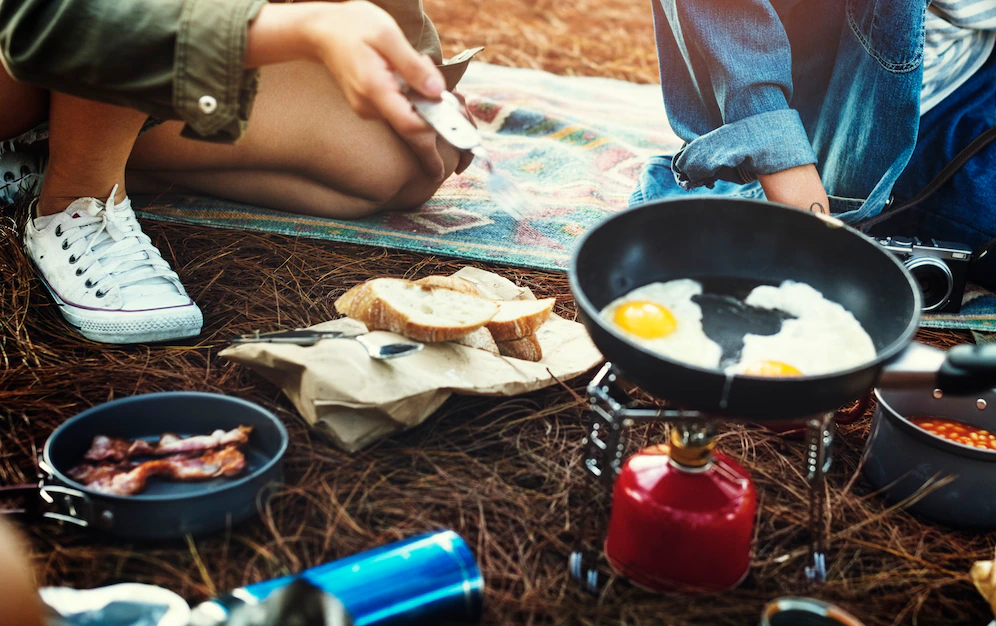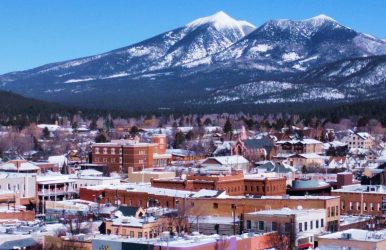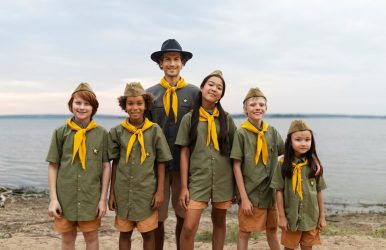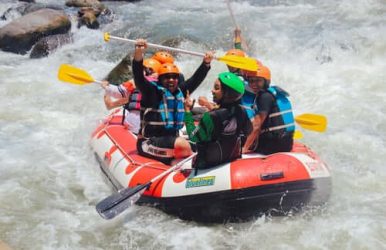Top 11 Unique things To Do In Flagstaff Before 2024
BY Abdul Aziz Apr 29, 2020
With many natural sights, monuments, and other adventurous places, Flagstaff is the largest city in northern Arizona. Trust me, you’re going to find a lot of exciting things to do in Flagstaff. I visited Flagstaff last year along with several other best places in the USA. It was a truly exhilarating journey from Las Vegas to Zion National Park. Apart from this, I also had a great time on the Maryland trip. Now, in this post, you will find many attractive places with a variety of outdoor activities such as hiking, skiing, snowboarding, etc. Best Things to Do in Flagstaff The best place to start your Flagstaff trip is from the Historic Downtown and Railroad District. Know the other exciting things to do here. 1. Exploring Historic Downtown and Railroad District https://www.instagram.com/p/C-GKpULKpQx/ When you plan your Flagstaff trip, I would recommend that you start the trip from the Historic Downtown and Railroad District. I’m sure you’re going to enjoy the beauty of the town walking along the streets. You will find historic buildings that are now being converted into hotels, restaurants, breweries, etc. Even at night, you’ll find a crowd in the town. I remember when I came back from a movie show, some college students were out on the street. You can book a day or two of your stay here to enjoy the farmer’s market, local events, entertainment shows, shopping, eating, and drinking. The town allows easy access to many other tourist spots in Flagstaff. A wonderful park is located within walking distance of the visitors’ center. 2. Visiting Wheeler Park is One of the Best Things to Do in Flagstaff https://www.instagram.com/p/Ctj4PRiK9Ts/ Take a short walk from the visitor center of the historic downtown to get to this park. Visiting Wheeler Park is one of the best things to do in Flagstaff. The park hosts a variety of events, such as regular park runs and weekly art festivals like Park Art, Hullabaloo, and more. The park is full of trees that give you a green space to relax and enjoy. When I visited this park, a lot of people came with books to read, but my friends and I enjoyed a picnic in the park. 3. Grand Canyon Day Tour This place is out of town, so you can book a day trip to discover different historic buildings and hike in different locations. If you have time, then a day trip to the Grand Canyon is one of the great things to do in Flagstaff. You’ll find the El Tovar Lodge and the Desert View Watchtower on this day trip. You’ll get a chance to have lunch and explore the Navajo Trading Post. Usually, it’s best if you’re traveling in a group. 4. Walnut Canyon National Monument Exploring the Walnut Canyon National Monument is one of the most interesting things to do in Flagstaff. You might be thinking, why is the name of the monument called so? The reason is simple: the name is because this national monument is full of Arizona Walnut trees. This monument is in the East of Flagstaff, which has many types of plants. The canyon has more than 500 species of plants, and you’ll find various wildlife in the forest. Another interesting part of the monument is the loop trail, which descends along the canyon. There are several other trails around the Walnut Canyon, but the loop trail is the most attractive one. Along this way, you will discover 25 historical limestone cliff residents where the Sinagua people were staying in the past. 5. Sunset Crater Volcano National Monument Have you ever heard of a volcano eruption? The Sunset Volcano National Monument is a place in Flagstaff where you can discover the eruption of volcanoes. Around 900 years ago, a massive volcano eruption shook the city. In this eruption, a significant volume of lava was released and dispersed over 4 miles and coated 800 + acres of land in ash and rock fragments. It’s been a long time since this eruption happened, but today, you can still find evidence of the violent and destructive events that occurred. The crater gives you a perfect hiking trail to explore the three lava flows. However, certain areas of the crater are not permitted to be explored for safety reasons. Head to the visitor center, where you can learn about the volcano eruption and how it affected the region. Many visitors recommend exploring the crater, which is one of the best things to do in Flagstaff. 6. Wupatki National Monument Among other National Monuments, the Wupatki is one of the most famous monuments in America. However, this monument is abandoned but safeguarded by the Hopi clans. They tell the lifestyle and stories about their ancestors. To their beliefs, people at that time died here and remained as spiritual guides. If you want to discover the rich American history, then visiting the Wupatki National Monument is one of the best things to do in Flagstaff. Ancient Pueblo people built this monument. It has three buildings and 29 structures in an area of 35,000 acres (about half the area of Athens, Georgia). I didn’t get a chance to explore the place with the rangers when I visited. But if your luck is good, you might have an opportunity to discover the monument with the rangers. You can hike to some parts of the monument. 7. Arizona Snowbowl Scenic Chairlift https://www.instagram.com/p/C75FlFhpVmS/?img_index=1 Riding the scenic chairlift to see the Arizona Snowbowl and the San Francisco Peaks is one of the most interesting things to do in Flagstaff. If you’re planning your trip in the autumn (that’s from October to December), you’ll enjoy the scenic chairlift ride. In this season, the landscape of Arizona showcases different colors and is truly mesmerizing. When you reach the top, you will gain some information about the place from the rangers. They offer you knowledge on various topics such as the habitats of the region, geology, and history. Apart from this, you can enjoy adventurous activities like snowboarding, walking on the trails, and skiing. 8. Exploring the Lowell Observatory is one of the Unique Things to Do in Flagstaff Lowell Observatory offers you the opportunity to get a view of space through telescopes. Do you know that this is the place where Pluto was discovered? Here, you will find the original telescope that was used to discover the planet Pluto. Now, it is a working research center that is open to visitors to learn about space, the universe, galaxies, etc. I would say visiting the Lowell Observatory is one of the most exciting things to do in Flagstaff. The observatory also hosts different special programs that allow you to meet an astronomer or attend different events, such as meteor showers. 9. Flagstaff Extreme Adventure Course https://www.instagram.com/p/Cv-CXpCL-tn/ Do you like adventurous or challenging activities? Taking a rope drive on the zip lines in the Forthfill Country Park will pump your adrenaline. This spot will give you a thrilling experience by suspending between the trees. I had a fear of heights, and it was really challenging for me, but I really enjoyed the rope drive. Trust me, this is one of the most adventurous things to do in Flagstaff, in my opinion. If you travel in a group or alone, you can enjoy different adventure courses, from walking on the ropes to swinging between the trees. This place offers a different level of activities for adults and kids. 10. Camping At Lockett Meadow This is the most beautiful place to visit on the list of things to do in Flagstaff. This is a fantastic place in the Coconino National Forest, inside Flagstaff. If you want to visit this place, one day is not enough and, fortunately, you can enjoy camping here. The best time to visit this place is all year round because you’ll have a different experience in every season. You’ll find the ash tree leaves turning yellow in the summer, and the whole place looks amazing. Meanwhile, in spring, the entire meadow is full of flowers. 11. Museum of Northern Arizona https://www.instagram.com/p/C2nVq3esjJ_/?img_index=1 This is a place where you can learn about the history of Flagstaff. The museum is built on lava stone. It allows you to discover the dinosaurs, the geology of Northern Arizona, and the ancient people who lived there. In my opinion, this is a place that you should never miss if you ever travel to Flagstaff. Here, you will learn about the history, biology, arts, geology, and many other things about Northern Arizona. Along with that, the museum has a central garden that shows different species of plants in the area. Visiting the museum can give you some knowledge about this place. It is one of the best things to do in Flagstaff. Why Is Flagstaff Called a Dark City? Flagstaff became the official “Dark City” in 2001. On 24th October 2001, it was named the “First International Dark Sky City” because of the unforeseen work it did to preserve the natural resources of the night sky. The preservation effort was to ensure economic security and public safety. Also, it was instrumental in ensuring Flagstaff’s position as a “premiere astronomic site” in the world. In addition, it was an expression of community values. You can even watch the Milky Way in Flagstaff, and the view is stellar. If the weather is good, you will see the stars shooting one after another. Bon Voyage! Hopefully, you’ve found some useful travel ideas and unique things to do in Flagstaff. From my experience, I recommend that you plan your trip from October to December. To explore every place on the list and have a memorable experience, plan your tour for 10 to 15 days (about 2 weeks). As I mentioned above, you’re going to explore the National Monuments, a few parks, and more. Hiking, snowboarding, skiing, and rope driving are some of the outdoor activities you’ll enjoy on your Flagstaff tour. Also read Beginner Tips For Your First Camino de Santiago. Ultimate Guide to Your Next Family Vacation in Israel. Boat Charter Miami: Essential Tips for a Great Experience.












